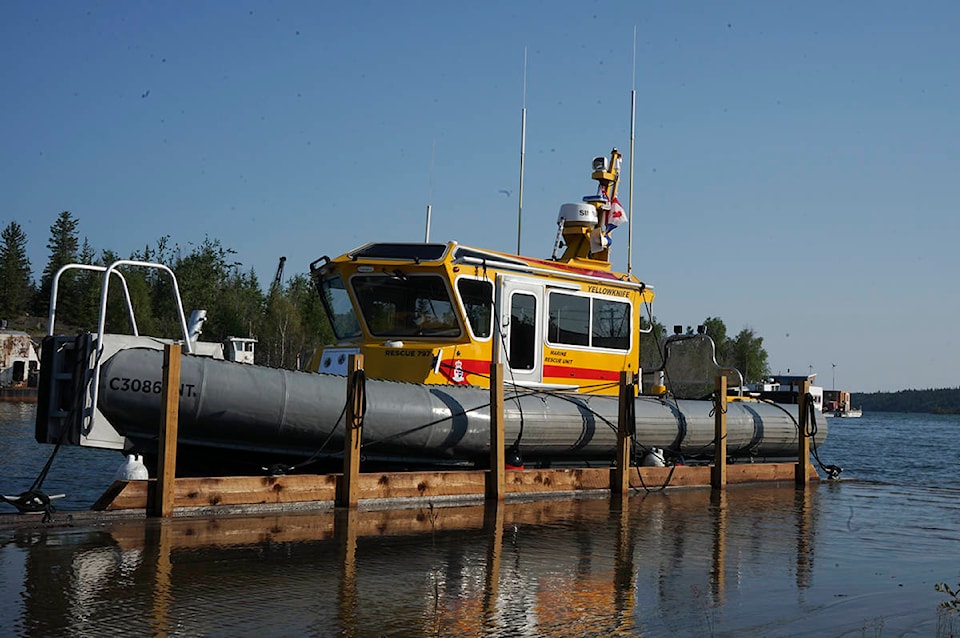The Yellowknife Marine Rescue unit has some new kit.
The new Search and Rescue vessel cost approximately $305,000 said Brian McShane, a duty watch leader at the Marine Rescue Unit. The new vessel, Rescue 797, was built by Metal Craft Marine Cruise and it is 35 feet in length, which makes it their largest.
The unit received funding support from the Fisheries and Oceans of Canada Indigenous Community Boats Program and the Yellowknife Marine Rescue Society. They also had local funding support from the Yellowknives Dene First Nation, Lutsel K’e Dene First Nation and the City of Yellowknife.
McShane said the Indigenous Community Boats Program donated $256,176 and the rescue unit contributed the remaining funds towards the vessel.
He said they needed to “modernize their Search and Rescue fleet with the increased marine traffic, both commercially and recreationally on the lake.”
The rescue unit was formed in 1992 and is the primary search and rescue resource on the Northern half on Great Slave lake, which is 13,600 square kilometres in area.
The idea to create the rescue unit came from July 1982 when a boat, float plane and a sailboat crashed together in Yellowknife Bay killing Nick Martin. The rescue unite is now a non-for-profit organization and it is a registered charity, and they named one of their vessels after the victim.
According the Yellowknife Marine Rescue Unit they have a force of 40 volunteers. On average in the summer they attend approximately 12 incidents; serious injuries or deaths are rare.
